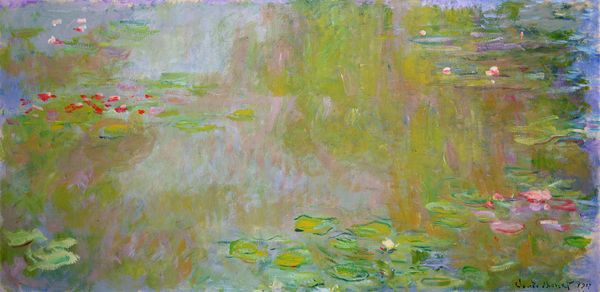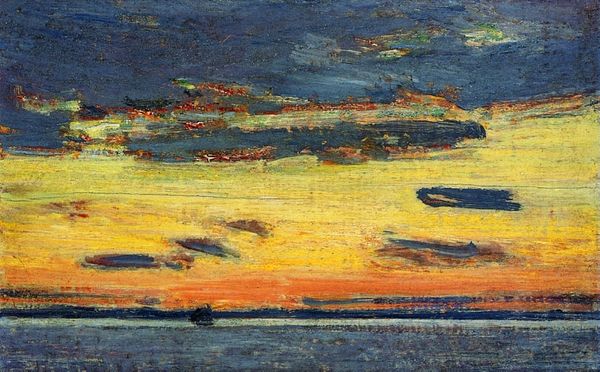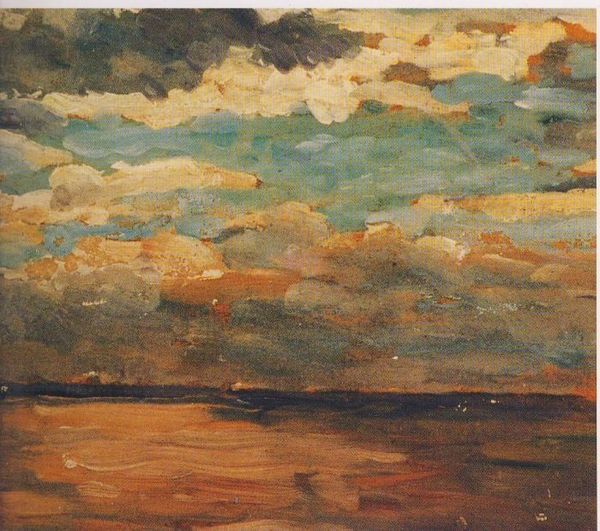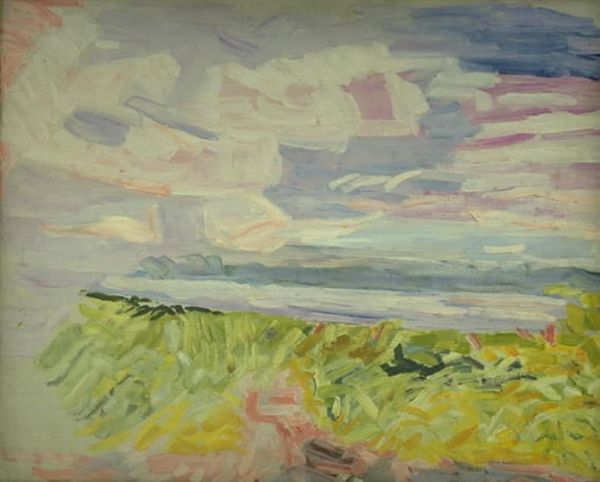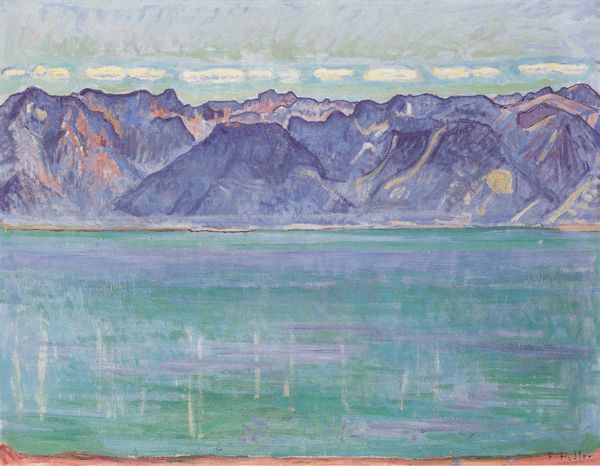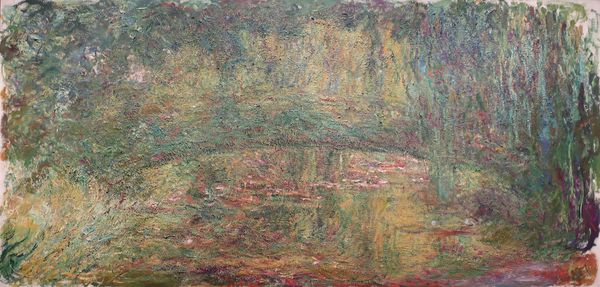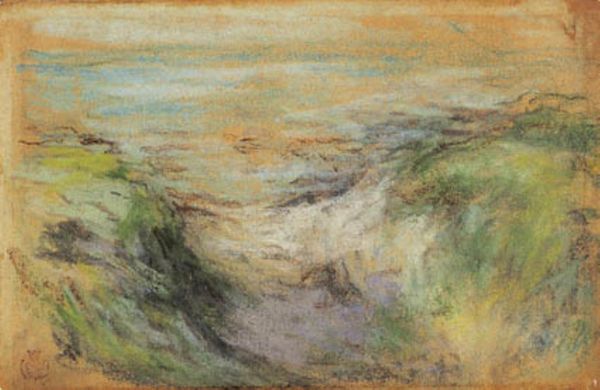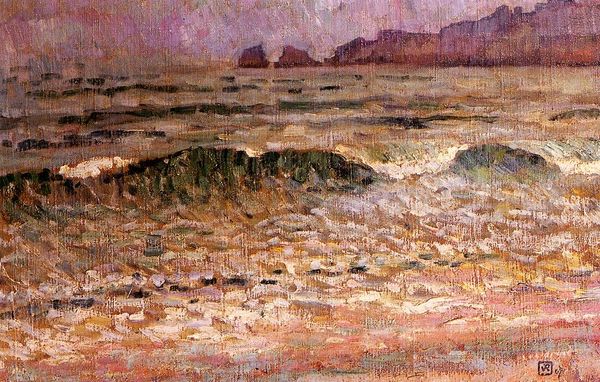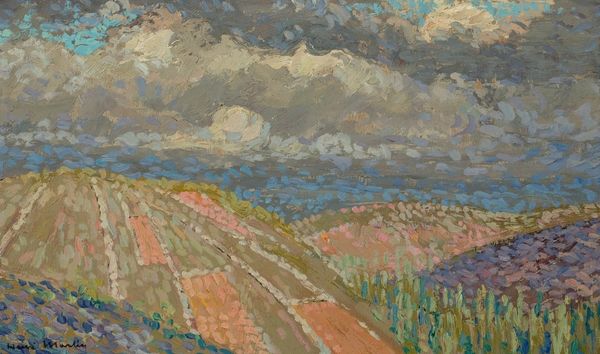
View from the Dunes with Beach and Piers 1909
0:00
0:00
pietmondrian
Museum of Modern Art (MoMA), New York City, NY, US
Copyright: Public domain
Curator: Immediately striking, isn't it? Mondrian’s "View from the Dunes with Beach and Piers," painted in 1909 using oil paint, presents a captivating landscape that moves between representation and near-abstraction. Editor: There’s an immediate sense of tranquility. The horizontal bands of color are soothing, like gazing out over a calm sea. But the more I look, the more the lack of clear forms unsettles me—it's a harmony on the verge of dissolving. Curator: Fascinating that you say "dissolving." Consider the social context; this work predates his fully abstract period. Mondrian was deeply influenced by theosophy and a search for universal, underlying forms. We see that push-pull between representation and something beyond, even here. This wasn't just capturing a scene, but also an exploration of nature's underlying structure and it's rooted in material processes: he was experimenting, trying to push beyond impressionism through his work with the paint itself. Editor: Absolutely. If we look at the composition, it's all about lines and color relationships. The ochre and blues play against each other creating visual depth and a sense of receding space, yet the brushwork is loose, almost gestural. You get the sense of him searching for form through pure paint. It makes me wonder about the canvas itself—how its materiality contributed to or resisted the image he was trying to achieve. Curator: And what of Mondrian’s choice to paint *en plein air*? It directly connects the labor and creation to a specific time, and the atmospheric conditions experienced. One can practically feel the cool North Sea air through his color choices, understanding both his individual act of artistic labor in the landscape and how it informed a style rooted in process. Editor: I hadn't considered that aspect. For me, the interplay of hues gives the sky a liminal quality like the brink of sunrise. It reflects the shifting moods of the landscape, doesn't it? Almost like fleeting, sensorial moments. Curator: Perhaps it signals the turning away from tangible realities toward a reductive, spiritual vision of the world's foundations, viewed in his process-oriented works that break from the traditional academic approaches he studied. Editor: Looking at the materiality, you're right. Mondrian is inviting us to perceive beyond the surface representation, exploring its deeper spiritual undercurrents through the relationship of shape and plane. I am left wanting to see this as Mondrian's individual creation. Curator: Interesting insights—thank you! Editor: Thank you. It gave me a renewed appreciation for his unique path into abstract painting.
Comments
No comments
Be the first to comment and join the conversation on the ultimate creative platform.


